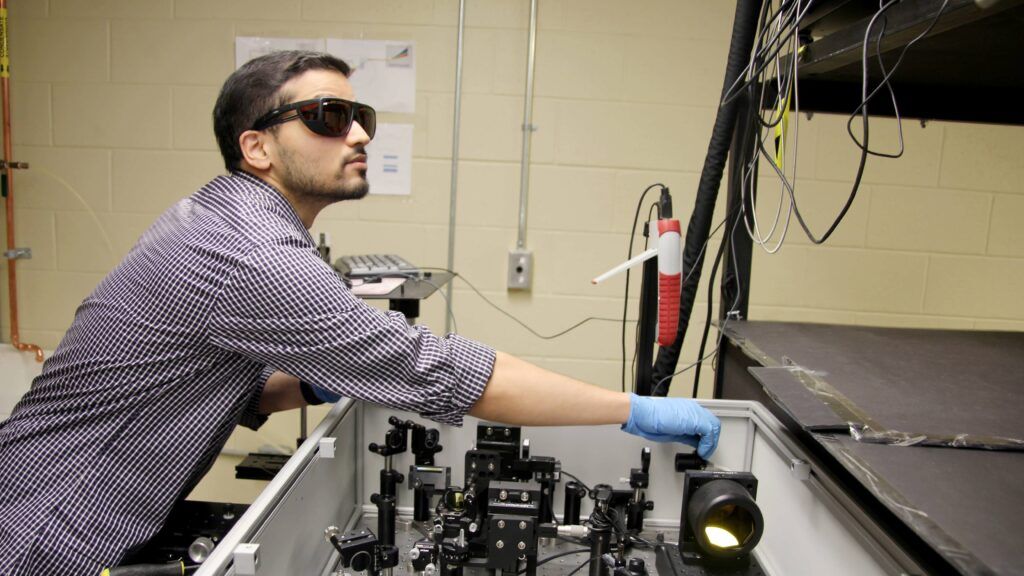We seek to discover new semiconducting materials for use in on-chip signal processing. Our team unites high-throughput computational and experimental frameworks to screen new candidate materials, with an emphasis on solution-processability and stability. We utilize machine-learning and robotic experimentation to augment and accelerate the discovery process of new non-centrosymmetric materials for electro-optic (EO) applications.
Photodetectors
Photodetectors are central to many technologies spanning consumer electronics (handset cameras and laptops); fiber optic communications; data storage and information technology; surveillance; space exploration; gas sensing; and medicine, among others. To date, the photodetector industry represents a growing multi-billion-dollar market. Detection of infrared photons is especially interesting, since widespread Silicon-based imagers are only sensitive below 1100 nm. Existing technologies for infrared photodetection are either too expensive and difficult to interface or lack the needed sensitivity. Emerging applications such as machine vision, gesture and face recognition, distance ranging and 3D vision, require on top of that fast photodetection – challenging to achieve for infrared semiconductors. In the Sargent group, we are working on next-generation materials towards the realization of fast and sensitive infrared photodetectors. We work with nanostructured materials such as colloidal quantum dots and perovskites and exploit their tunable character to optimize charge transport and optoelectronic operation.



